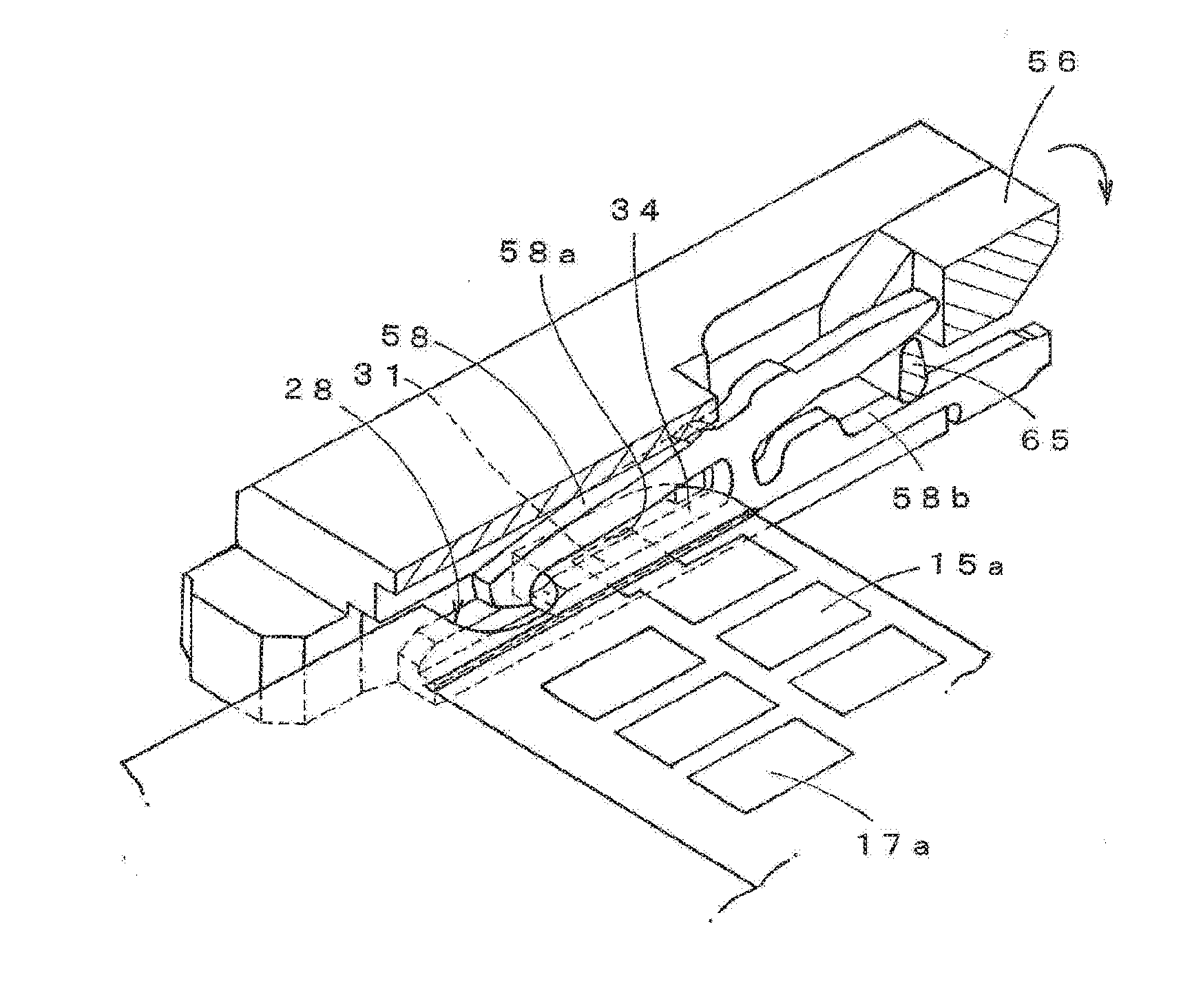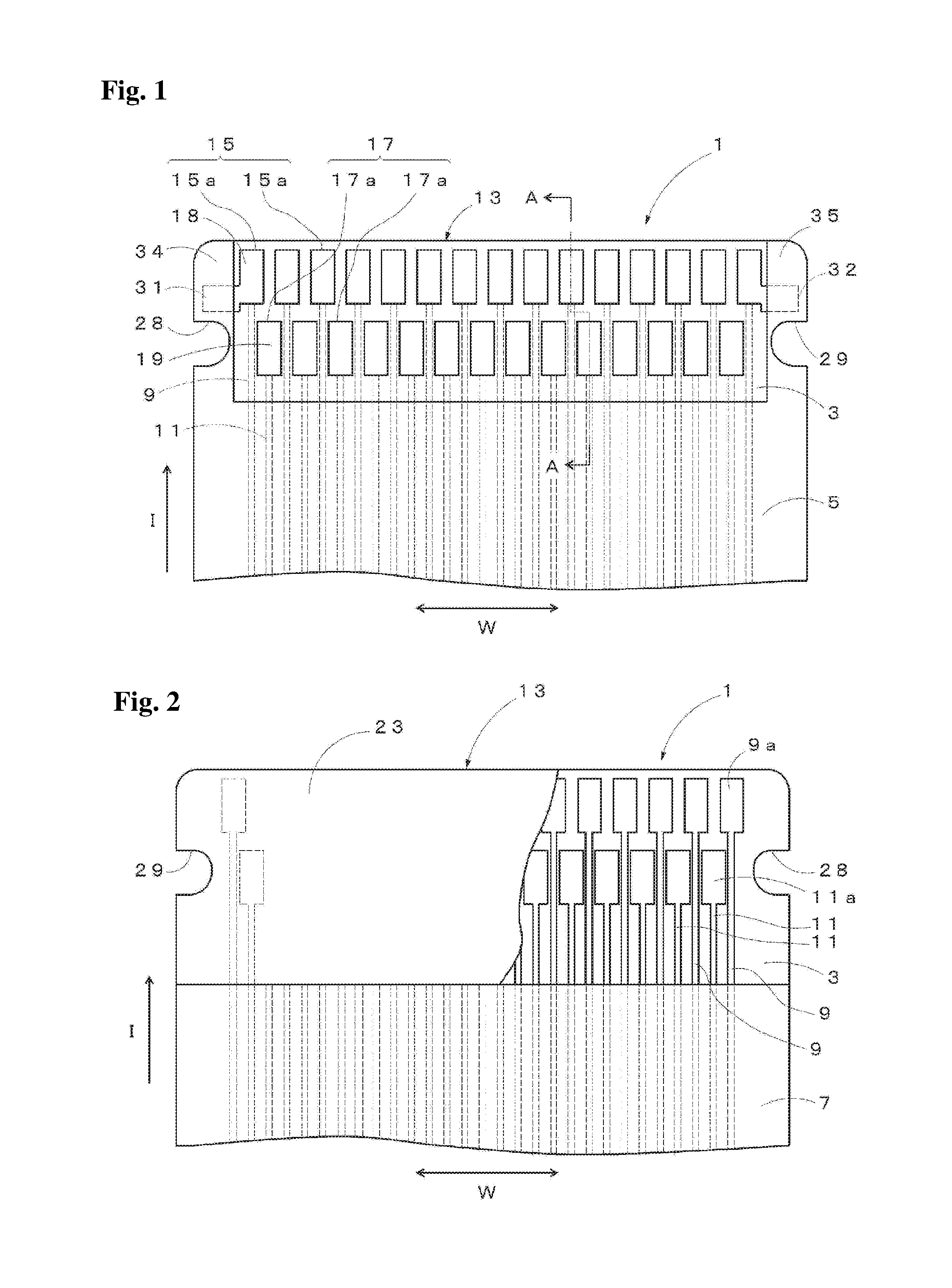Printed wiring board and connector connecting the wiring board
a technology of printed wiring board and connector, which is applied in the direction of printed circuit details, printed circuit aspects, coupling device connections, etc., can solve the problems of weak holding force given by the connector to the connection end portion, contact failure, etc., and achieve the effect of reducing the degree of freedom of wiring in the wiring board, enhancing the disconnection resistance of printed wiring board, and enhancing the strength
- Summary
- Abstract
- Description
- Claims
- Application Information
AI Technical Summary
Benefits of technology
Problems solved by technology
Method used
Image
Examples
example 1
[0092]As Example 1, a printed wiring board having the structure shown in FIGS. 1 to 4 was experimentally manufactured. Specifically, the flexible printed wiring board was manufactured such that: the connection end portion had pads disposed in a staggered arrangement to form 15 pads of the front array and 14 pads of the rear array; the pitch of the pads was 0.175 mm (0.35 mm in each array); both the wirings for the pads of the front array and the wirings for the pads of the rear array were provided on the surface (back surface) of the base film opposite to the surface provided with the pads; and reinforcement layers formed integrally with the pads were provided at the top surface side and at the frontward side with respect to notched parts (engageable parts). In addition, insulating layers were formed on the upper surfaces of the reinforcement layers using extended parts of an upper surface side coverlay. The pads, wirings and reinforcement layers were made of copper, and gold plated...
example 2
[0093]As Example 2, a printed wiring board was experimentally manufactured as in Example 1 except that the reinforcement layers at the top surface side (the side provided with the pads) of the base film were formed separately from the pads as shown in FIG. 13 and insulating layers covering the reinforcement layers were not provided.
example 3
[0094]As Example 3, a printed wiring board was experimentally manufactured as in Example 2 except that insulating layers covering the reinforcement layers were provided as shown in FIG. 14. In more detail, the flexible printed wiring board of Example 3 was manufactured such that the insulating layers covering the reinforcement layers were constituted of extended parts extending frontward from the outer side parts of the upper surface side coverlay in the width direction.
PUM
 Login to View More
Login to View More Abstract
Description
Claims
Application Information
 Login to View More
Login to View More - R&D
- Intellectual Property
- Life Sciences
- Materials
- Tech Scout
- Unparalleled Data Quality
- Higher Quality Content
- 60% Fewer Hallucinations
Browse by: Latest US Patents, China's latest patents, Technical Efficacy Thesaurus, Application Domain, Technology Topic, Popular Technical Reports.
© 2025 PatSnap. All rights reserved.Legal|Privacy policy|Modern Slavery Act Transparency Statement|Sitemap|About US| Contact US: help@patsnap.com



